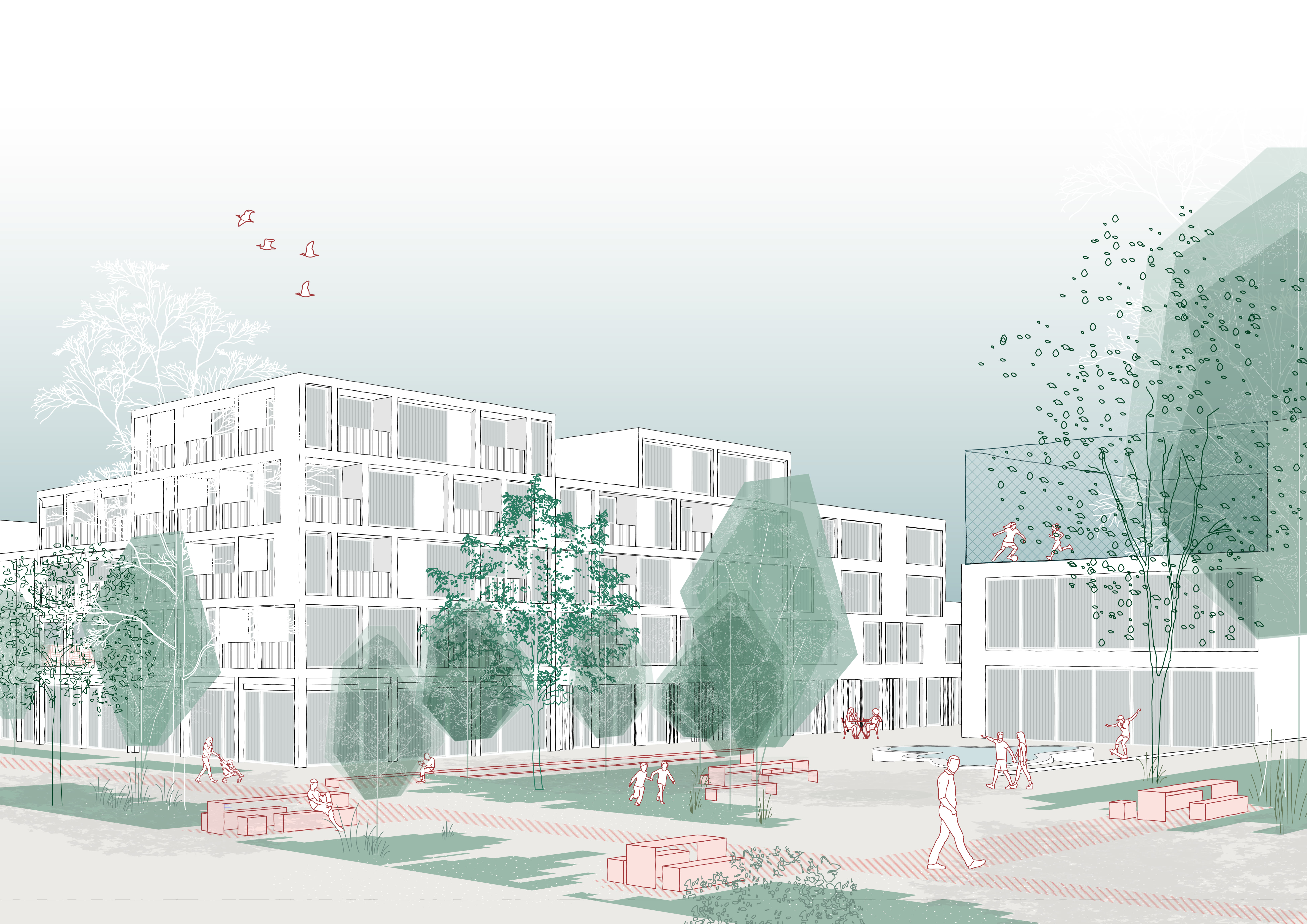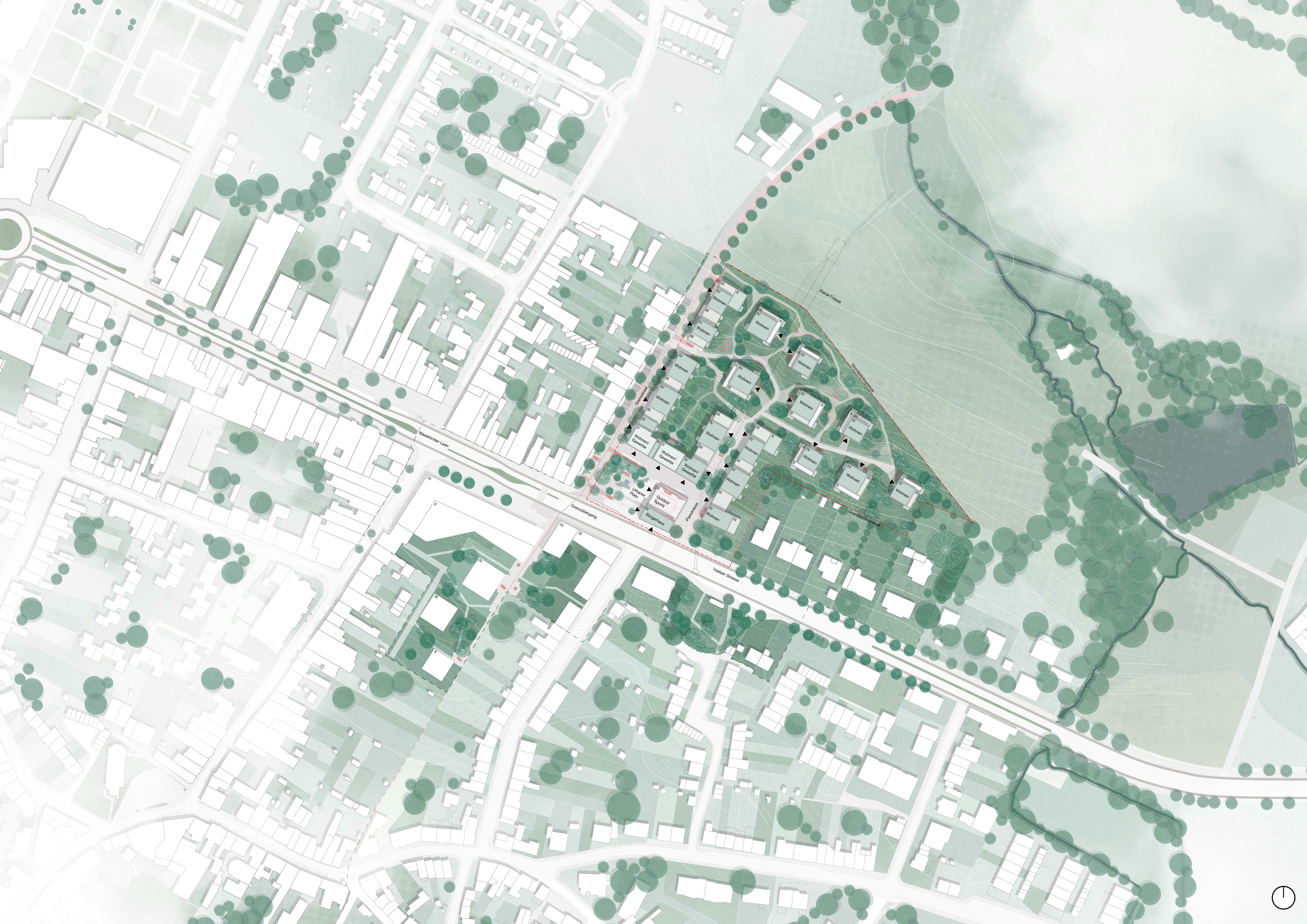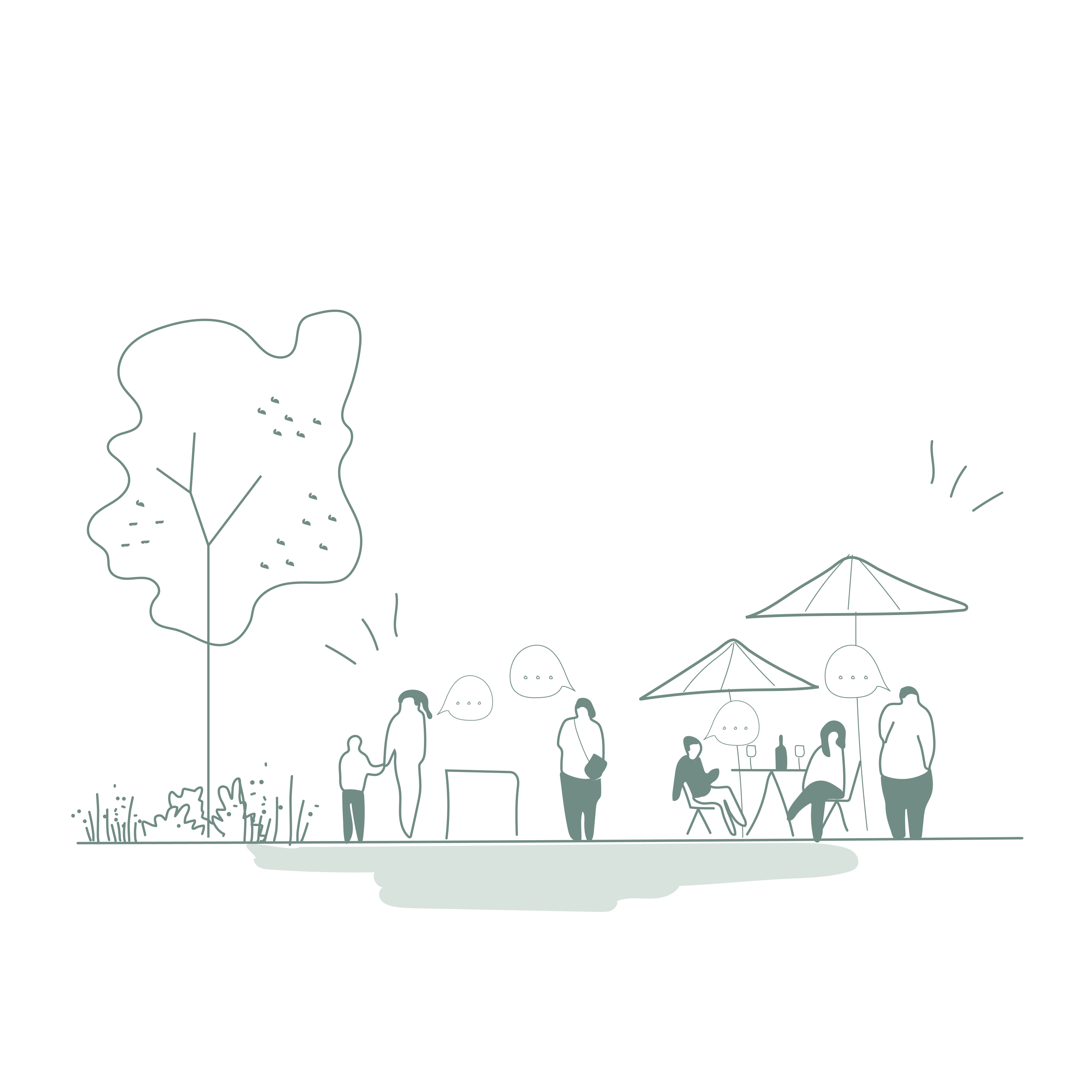





The national border between Germany and the Netherlands divides the city of Vaals into two completely different districts - with clearly visible consequences for identity, spatial quality and perception. While the Dutch part impresses with its urban density and clear structure, its German counterpart - the Vaalser Quartier - lacks a comparable urban structure.

The design for the new residential quarter on the outskirts of Aachen aims to continue the urban character of Maastrichter Laan in the Netherlands on this side of the border in the Vaalser Quartier. The result is a hybrid quarter that combines city and landscape, public life and private retreats as well as mobility and sustainability. A new community center, a central square and a permeable transition to nature form the cornerstones of the design.

Vaals, a town on the border between Germany and the Netherlands, is conceived as a coherent organism despite being divided by the national border. The “Pas de Deux” design idea sees the new quarter as a choreography between two urban worlds: the closed block on Vaalser Strasse and an open, landscape-oriented structure facing the Senserbach nature reserve on the north side.
An identity-forming community center at the new Grenzplatz forms the focal point - it functions as a place of encounter, exchange and mobility for all generations. It is complemented by apartments of various typologies and a low-car traffic concept with a central neighborhood garage.
Public spaces, green connections and permeable paths create flowing transitions between urban life and nature. The use of water is based on the principle of the “interactive sponge city”: rainwater is collected, stored and integrated into the urban experience.
The border itself is transformed - from a dividing line to a “zipper” that connects symbolically and functionally by means of graphic markings, qualities of stay and green infrastructure. The result is a vibrant quarter that not only overcomes physical divides, but also creates new opportunities for community - across national borders.

City of Aachen
Workshop procedure with three participants, 1st prize
C. Wens, M. Sporer, S. Verrieth
Karres en Brands
Karres en Brands